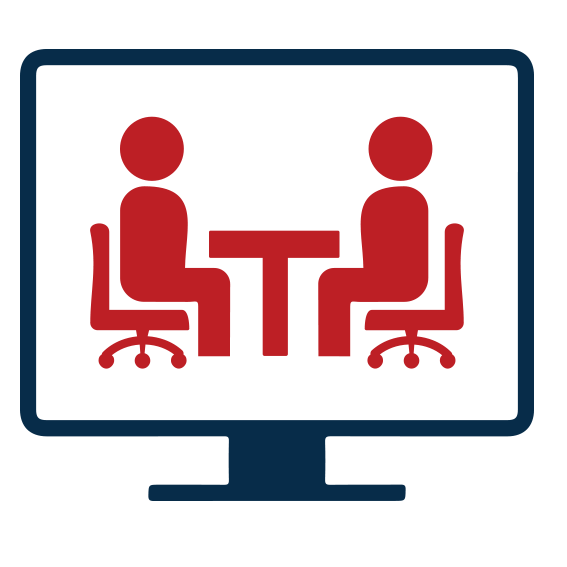How much do you know
about your software?
How robust is it? How secure? How scalable?
How much do you know
about your software?
How robust is it? How secure? How scalable?
Technology is tricky
You know exactly how your final product should function and look. Yet when you try to get it built, you often don’t end up with the quality you are looking for. Without strong development skills, you always seem to feel like you’re on the outside looking in. This poses a serious issue—how can you get the software help you need, if you don’t even know what to ask for? Talk about a shot in the dark.
There are three general grades of software development. There’s prototype, business-ready and enterprise. You might need high scalability, but low security. With the right team, it’s easy to figure out exactly what grade you need for what aspects.


It takes 20 years to build a reputation and 5 minutes to ruin it
Do you remember the
Boeing 737 MAX crashes?
Of course you do. The Ethiopia Air crash and the Lion Air crash that occurred in 2019 shocked the world. And to make matters worse, these two tragedies were not because of human error, but because the quality of software was not up to par. What happened was that the software in the alert system failed, resulting in two fatal crashes, and 346 deaths.
This software should have been enterprise-grade software, and was relied upon as if it was enterprise-grade, but in the end was not built correctly.

Do you remember the
Boeing 737 MAX crashes?
Of course you do. The Ethiopia Air crash and the Lion Air crash that occurred in 2019 shocked the world. And to make matters worse, these two tragedies were not because of human error, but because the quality of software was not up to par. What happened was that the software in the alert system failed, resulting in two fatal crashes, and 346 deaths.
This software should have been enterprise-grade software, and was relied upon as if it was enterprise-grade, but in the end was not built correctly.


Not sure what the difference is?
Keep reading to find out
Many technology companies will automatically quote you with the lowest grade and never discuss other options. This leaves you with a product you can’t use, and a ton of wasted money. Here’s what you need to know to avoid disaster on your next development project.
1. Prototype Software
You’ve got a killer idea! Awesome! But … now what?
Prototyping is the grade of software engineering you need when you’re presenting your big idea for the first time. It allows you to show proof of concept so that your idea can be seen, and some of the key functionalities can be used.
For example, you may be developing this for investors or internal stakeholders to look at, or to try expanding your business. Having a prototype to put in the hands of colleagues and investors is a whole lot better than just pitching your idea verbally!


Prototypes are just the beginning phase of development, hence they don’t need to be extremely secure, and if they malfunction, your business will still survive. Often this is the right grade when the software is not a central piece of your business.
It’s important to know what you’re looking for when hiring a team to build your prototype. You don’t want to shell out to a ton of cash when all you’re looking for is a simple application to present your idea. If you don’t work with someone that knows exactly what they’re doing, you could wind up overpaying.

WHAT TO LOOK FOR IN A QUOTE?

Simple prototypes generally cost thousands to tens of thousands of dollars to build depending on the project.
2. Production Ready or Business-Ready Software
Software is finalized and ready for major use when it reaches the “Production-Ready” or “Business-Ready” grade.
This may be software which you use within your company or which you market directly to consumers. Reliability is important, but not mission critical at this stage. Obviously, you don’t want it to malfunction, but if it does, your business will still survive while repairs are made.

Characteristics of Business-Ready Software

Little
Scalability

Low
security
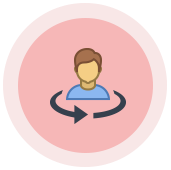
Often is for
a single-user
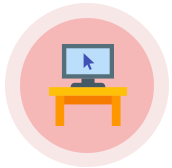
Not compatible across platforms

Often fails in unpredictable ways
WHAT TO LOOK FOR IN A QUOTE?

Most production-ready software costs tens of thousands to hundreds of thousands of dollars to build and maintain.
For example, if you run a store, and your credit card reader goes down, your store won’t fail. It might be really annoying and your amount of business might go down (because who carries cash nowadays), but ultimately your business will survive until you are able to get it up and running again.
3. Enterprise-Grade Software
Enterprise-grade is the most mature grade of software. It’s thoroughly tested in different environments and scenarios and has a very defined back-up plan in case of errors.
This software is typically used by larger organizations, for sensitive situations (like things involving important data).
Characteristics of Enterprise Grade Software

Fully scalable
The system is built to be adaptable, meaning changes are easily made.

Significant data capacity
Store any and all data needed.

High security
Protected against attacks or hackers.

Robust network for global use
No matter where in the world, this should function.

Compatible across platforms
The system is built to be adaptable, meaning changes are easily made.

Clear protocol for failure
When something does fail, there is a clear route to resolve the issue.

Fully scalable
The system is built to be adaptable, meaning changes are easily made.

Robust network for global use
No matter where in the world, this should function.

Significant data capacity
Store any and all data needed.

Compatible across platforms
No matter what platform, this should function.

High security
Protected against attacks or hackers.

Clear protocol for failure
When something does fail, there is a clear route to resolve the issue.

Or think about the technology that is used in hospitals. In this case, choosing the proper grade of technology can literally be life or death. (You can’t use an unreliable architect if this is your industry!) Enterprise-grade is technology you never want to fail. But, as with everything, even the greatest technology fails eventually.
That’s why this technology is set up so that it fails in very specific ways. This means that protocol can be put in place so that the company doesn’t lose out big time. If the technology you are looking to design is something your business depends on in order to be successful- it needs to be enterprise-grade.
When you need Enterprise-Grade software, it has to be developed professionally by a team you trust. If you hire a developer that cuts corners, you could wind up with software that is too unorganized for someone else to pick up where the old developer left off, or even worse consequences. There’s so much that can go wrong, and so much money at stake when you build Enterprise-Grade software.
WHAT TO LOOK FOR IN A QUOTE?

Enterprise-grade software generally costs hundreds of thousands to millions of dollars to build and maintain.
Who doesn’t
want the best?
But enterprise software is a big investment – it has to be something that can benefit your business in the hundreds of thousands of dollars – otherwise it doesn’t make business sense.

Choosing the right partner to help you
Now that you know the three grades of software,
choose a partner that can deliver what you need.

There’s a lot that can go wrong when you’re developing software. If you’re not careful, you could end up with a full-on wreck in your hands.
You might look at your project and think that you need business-ready software, but also need advanced security, so somewhere in the middle of the two. Since these three grades of development are a gradient, that’s easy to do, as long as you have the right partner.
Someone with years of tech experience can offer clarity into this confusing process. They know how you should approach your project, and how you should move from stage to stage.
Picking the right partner from day one will save you money in the long run. If your software is developed professionally, it can be worked on years down the road by every new developer you bring on board.
DevStaff Canada has been solving a range of technical issues for large companies since 2001.
You can find comfort knowing that we take the time to fully understand your business prior to sourcing technical talent, and have the skills to fill your vacancies with precisely the right talent for the role.
Partner with DevStaff to fill your technical void and free up your budget, so you can put more money toward the game-changing projects you’ve always wanted to tackle.

When it comes to software, we can do it all:
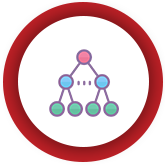
Architecture

Planning
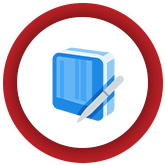
Design

Execution
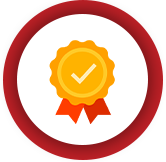
Quality Assurance

Support
We’ll deliver an end-to-end solution tailored to your needs.
Satisfied Clients Include









